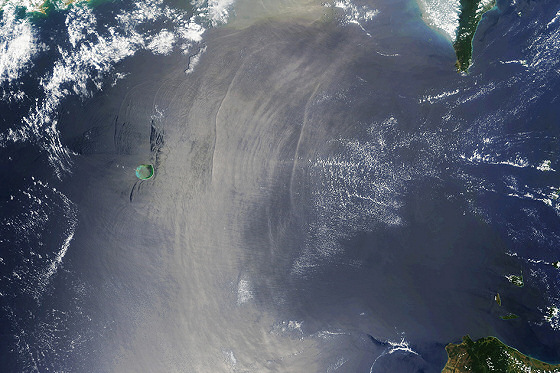Scientists have discovered how the Luzon Strait's giant internal waves rise from the deep.
The biggest ocean waves in the world sweep through the South China Sea's Luzon Strait, towering more than 550 feet (170 meters). However, these massive waves barely break the surface.
Researchers from the Massachusetts Institute of Technology (MIT) have proved that the spacing of two submerged seafloor ridges in the northern Luzon Strait is perfect for generating gigantic internal waves.
Because these massive internal waves don't break, there's no problem for ships that usually cross the waters between the Philippines and Taiwan.
"It's an important missing piece of the puzzle in climate modeling. Right now, global climate models are not able to capture these processes", explains Thomas Peacock, a mechanical engineer at MIT.
"The strong forcing and ridge geometry at Luzon Strait result in some of the strongest internal waves in the world's oceans. They are important for a variety of reasons, including the region's biology, the mixing and turbulence they produce, and marine navigation in the region", adds Matthew Alford, professor of oceanography at the University of Washington.
The only difference between an underwater wave and the water around it is its density due to temperature or salinity differences that cause ocean water to become stratified.
Surprisingly, internal waves can sometimes be seen clearly in satellite imagery. This is because the internal waves create alternating rough and smooth regions of the ocean that align with the crest of the internal wave.
Sunlight reflects the smooth sections, appearing as white arcs, while the rough sections stay dark.
